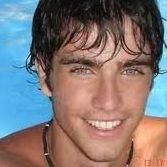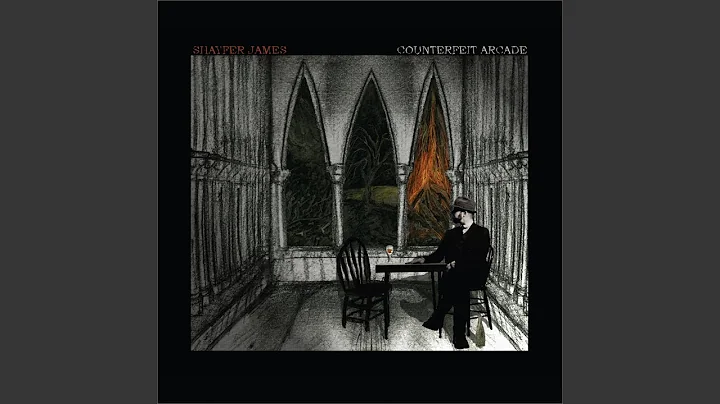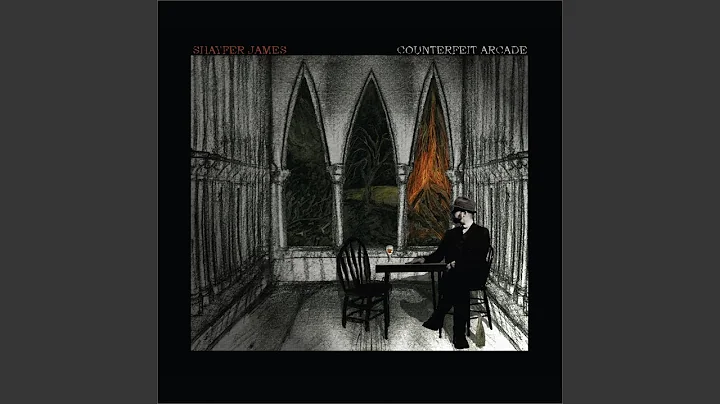James A Schaffer
age ~64
from Plymouth, MI
- Also known as:
-
- Jim Schaffer
- Jamesa Schaffer
- James Schaffer Austin
- Phone and address:
-
9317 Mapletree Dr, Plymouth, MI 48170
734 453-7505
James Schaffer Phones & Addresses
- 9317 Mapletree Dr, Plymouth, MI 48170 • 734 453-7505
- 6655 Orangewood Dr, Dallas, TX 75248 • 972 386-6641
- San Diego, CA
- Texarkana, AR
- Wappingers Fl, NY
- Wappingers Fl, NY
Work
-
Company:Lamesa obgyn
-
Address:8851 Center Dr, La Mesa, CA 91942
-
Phones:619 463-7775
-
Position:Owner
-
Industries:Offices and Clinics of Doctors of Medicine
Name / Title
Company / Classification
Phones & Addresses
Owner
Lamesa Obgyn
Offices and Clinics of Doctors of Medicine
Offices and Clinics of Doctors of Medicine
8851 Center Dr, La Mesa, CA 91942
Owner
Lamesa Obgyn
Offices and Clinics of Medical Doctors
Offices and Clinics of Medical Doctors
8851 Ctr Dr, La Mesa, CA 91942
619 463-7775
619 463-7775
INTERSTATE 74 TOWING, INC
INTERSTATE 75 TOWING, INC
COMPREHENSIVE PLANNERS, INC
NEXT GENERATION EDUCATION, LLC
BLUE ASH POLICE ASSOCIATION, INC
Director
NORTH TEXAS FOOTBALL LEAGUE
1330 N White Chapel Blvd STE 100, Southlake, TX 76092
Medicine Doctors

James W. Schaffer
view sourceSpecialties:
Family Medicine
Work:
Novant Health Medical GroupNovant Health South Park Family Physicians
6324 Fairview Rd STE 201, Charlotte, NC 28210
704 384-0588 (phone), 704 384-0580 (fax)
6324 Fairview Rd STE 201, Charlotte, NC 28210
704 384-0588 (phone), 704 384-0580 (fax)
Education:
Medical School
Duke University School of Medicine
Graduated: 1994
Duke University School of Medicine
Graduated: 1994
Procedures:
Arthrocentesis
Destruction of Benign/Premalignant Skin Lesions
Destruction of Lesions on the Anus
Electrocardiogram (EKG or ECG)
Hearing Evaluation
Inner Ear Tests
Psychological and Neuropsychological Tests
Pulmonary Function Tests
Skin Tags Removal
Vaccine Administration
Destruction of Benign/Premalignant Skin Lesions
Destruction of Lesions on the Anus
Electrocardiogram (EKG or ECG)
Hearing Evaluation
Inner Ear Tests
Psychological and Neuropsychological Tests
Pulmonary Function Tests
Skin Tags Removal
Vaccine Administration
Conditions:
Abdominal Hernia
Abnormal Vaginal Bleeding
Acne
Acute Conjunctivitis
Acute Pharyngitis
Abnormal Vaginal Bleeding
Acne
Acute Conjunctivitis
Acute Pharyngitis
Languages:
English
Spanish
Spanish
Description:
Dr. Schaffer graduated from the Duke University School of Medicine in 1994. He works in Charlotte, NC and specializes in Family Medicine. Dr. Schaffer is affiliated with Novant Health Presbyterian Medical Center.
Resumes

James Schaffer
view source
James Schaffer
view source
James Schaffer
view source
James R Schaffer
view source
James Schaffer
view source
James Schaffer
view sourceLocation:
United States

James Schaffer
view sourceLocation:
United States
Isbn (Books And Publications)
-
Introduction To Fluid Mechanics
view source -
Author:James P. Schaffer
-
ISBN #:0195154517
-
The Science And Design Of Engineering Materials
view source -
Author:James P. Schaffer
-
ISBN #:0072362820
-
The Science And Design Of Engineering Materials E-Text
view source -
Author:James P. Schaffer
-
ISBN #:0072445521
-
The Science And Design Of Engineering Materials
view source -
Author:James P. Schaffer
-
ISBN #:0075618370
-
The Science And Design Of Engineering Materials
view source -
Author:James P. Schaffer
-
ISBN #:0256114404
-
The Science And Design Of Engineering Materials
view source -
Author:James P. Schaffer
-
ISBN #:0256195803
-
The Science And Design Of Engineering Materials
view source -
Author:James P. Schaffer
-
ISBN #:0256247668
-
Increase Your Score In 3 Minutes A Day: Sat Critical Reading
view source -
Author:James Schaffer
-
ISBN #:0071440410
Us Patents
-
User Interface For Collecting Viewer Ratings Of Media Content And Facilitating Adaption Of Content Recommenders
view source -
US Patent:6990635, Jan 24, 2006
-
Filed:Jan 24, 2001
-
Appl. No.:09/768913
-
Inventors:Kaushal Kurapati - Yorktown Heights NY, US
James David Schaffer - Wappingers Falls NY, US -
Assignee:Koninklijke Philips Electronics N.V. - Eindhoven
-
International Classification:G06F 5/00
-
US Classification:715747, 725 37
-
Abstract:A user interface for a TV recommender system includes a display screen having a first region for displaying a rating derived from a previously defined TV viewing preference profile contained in the recommender system; and a second region displaying preference settings in the profile which were used to derive the rating. The user interface enables the preference settings to be changed if the rating derived by the profile is incorrect. Additionally, the user interface allows for new features to be added to the profile, which were not previously a part of the profile.
-
Evening Planner
view source -
US Patent:7131134, Oct 31, 2006
-
Filed:May 8, 2001
-
Appl. No.:09/850755
-
Inventors:Karen I. Trovato - Putnam Valley NY, US
James D. Schaffer - Wappingers Falls NY, US
Kaushal Kurapati - Yorktown Heights NY, US -
Assignee:Koninklijke Philips Electronics N.V. - Eindhoven
-
International Classification:G06F 3/00
G06F 13/00
H04N 5/445 -
US Classification:725 46, 725 44, 725 47
-
Abstract:An apparatus and method for recommending a schedule of events to a user is disclosed. In the preferred embodiment of the system and method, each channel schedule is broken down into time slices. A novel fuzzy-now recommendation-time value is calculated for each time slice. This fuzzy-now recommendation-time value is a two dimensional value measured in units of recommendation-time, or “enjoyment minutes”. By means of the calculated fuzzy-now recommendation-time values, recommended schedules may be generated using a wide variety of selection methods.
-
Method To Automatically Decode Microarray Images
view source -
US Patent:8199991, Jun 12, 2012
-
Filed:Dec 3, 2007
-
Appl. No.:12/516931
-
Inventors:Lalitha Agnihotri - Tarrytown NY, US
James David Schaffer - Wappingers Falls NY, US
Nevenka Dimitrova - Pelham Manor NY, US -
Assignee:Koninklijke Philips Electronics N.V. - Eindhoven
-
International Classification:G06K 9/36
-
US Classification:382129, 382199, 382280
-
Abstract:A method of automatically identifying the microarray chip corners and probes, even if there are no probes at the corners, in a high density and high resolution microarray scanned image having an image space, wherein the method minimizes the error distortions in the image arising in the scanning process by applying to the image a multipass corner finding algorithm comprising: (a) applying a Radon transform to an input microarray image to project the image into an angle and distance space where it is possible to find the orientation of the straight lines; (b) applying a fast Fourier transform to the projected image of (a) to find the optimal tilting angle of the projected image; (c) determining the optimal first and last local maxima for the optimal tilting angle; (d) back projecting the determined first and last local maxima to the image space to find the first approximation of the first and last column lines of the image; (e) rotating the image and repeating steps (a) through (d) to find the first approximation of the top and bottom row lines of the image; (f) determining the first approximation of the four corners of the image from the intersection of the column and row lines; (g) applying a heuristic for determining if the first approximation of step (f) is sufficient; and (h) optionally trimming the scanned image around the first approximation of the four corners and repeating steps (a) through (f).
-
Decision Support System For Acute Dynamic Diseases
view source -
US Patent:8494871, Jul 23, 2013
-
Filed:Jul 11, 2008
-
Appl. No.:12/668431
-
Inventors:James David Schaffer - Wappingers Falls NY, US
Mark R. Simpson - White Plains NY, US
Nicolas Wadih Chbat - White Plain NY, US
Nilanjana Banerjee - Armonk NY, US
Yasser H. Alsafadi - Yorktown Heights NY, US -
Assignee:Koninklijke Philips N.V. - Eindhoven
-
International Classification:G06Q 10/00
-
US Classification:705 2, 705 3
-
Abstract:A medical apparatus () assists clinicians, nurses or other users in choosing an intervention for the treatment of a patent suffering from an acute dynamic disease, e. g. sepsis. The medical apparatus is based on a method where a model of the disease is adapted or personalized to the patient. To ensure that the apparatus remains capable of predicting the health of the patient, the apparatus is continuously provided with new, more recent patient values and the model is continuously adapted to the new patient values. Since the medical apparatus is configured to be continuously adapted to current state of health, the apparatus is able to assist the user by generating disease management information, e. g. suggestions for medications, to an output device ().
-
Method And Apparatus For Automatically Developing A High Performance Classifier For Producing Medically Meaningful Descriptors In Medical Diagnosis Imaging
view source -
US Patent:8208697, Jun 26, 2012
-
Filed:Dec 13, 2005
-
Appl. No.:11/721999
-
Inventors:James David Schaffer - Wappingers Falls NY, US
Walid Ali - Croton-On-Hudson NY, US
Larry J. Eshelman - Ossining NY, US
Claude Cohen-Bacrie - New York NY, US
Jean-Michel Lagrange - Moissy Cramayel, FR
Claire Levrier - Rueil-Malmaison, FR
Nicholas Villain - Clamart, FR
Robert R. Entrekin - Kirkland WA, US -
Assignee:Koninklijke Philips Electronics N.V. - Eindhoven
-
International Classification:G06K 9/36
-
US Classification:382128, 382130, 382132, 382155, 382156, 382157
-
Abstract:A method for determining the presence or absence of malignant features in medical images, wherein a plurality of base comparison or training images of various types of lesions taken of actual patient is examined by one or more image reading experts to create a first database array. Low-level features of each of the lesions in the same plurality of base comparisons or training images are determined using one or more image processing algorithms to obtain a second database array set. The first and second database array set are combined to create a training database array set which is input to a learning system that discovers/learns a classifier that maps from a subset of the low-level features to the expert's evaluation in the first database array set. The classifier is used to determine the presence of a particular mid-level feature in an image of lesion in a patient based solely on the image.
-
Television Viewer Profile Initializer And Related Methods
view source -
US Patent:20020116710, Aug 22, 2002
-
Filed:Feb 22, 2001
-
Appl. No.:09/791999
-
Inventors:James Schaffer - Wappingers Falls NY, US
Paul Rankin - Surrey, GB
Keith Mathias - Parker CO, US
John Milanski - Boulder CO, US -
International Classification:H04N007/16
H04H009/00
H04N007/025
H04N007/10
G06F003/00
H04N005/445
G06F013/00 -
US Classification:725/046000, 725/009000, 725/035000
-
Abstract:A TV viewer profile initializer for reducing the time it takes for an implicit profiler-based TV recommender to produce accurate TV recommendations. The profiles initializer utilizes stereotype profiles from a substantial pool of TV viewing behavior of a representative number of TV viewers. By applying clustering methods to such data, stereotype profiles can emerge. New viewers are then be offered a selection of stereotype profiles to choose from to initialize their own personal TV viewing profile. Thus, a single choice will suffice to provide a predictable TV show recommender that is presumably fairly close to a viewer's own preferences. After this initialization, the profile can be adapted by the user's own viewing behavior to migrate from the initial stereotype towards a more accurate profile of the user.
-
Subscription To Tv Channels/Shows Based On Recommendation Generated By A Tv Recommender
view source -
US Patent:20030145326, Jul 31, 2003
-
Filed:Jan 31, 2002
-
Appl. No.:10/066453
-
Inventors:Srinivas Gutta - Yorktown Heights NY, US
James Schaffer - Wappingers Falls NY, US
Larry Eshelman - Ossining NY, US -
Assignee:Koninklijke Philips Electronics N.V.
-
International Classification:H04N005/445
-
US Classification:725/046000, 725/051000
-
Abstract:A system and method for subscribing TV programs according to the preferences of the user based on the user's past viewing history. The system keeps track of all the programs watched by the user to generate a profile indicative of the frequency of a particular program being watched. Then, a plurality of subscription plans based on the viewer's viewing habit stored in the user profile is offered to the user, so that the user can selectively pay for the programs of his or her interest, instead of paying for the entire programs.
-
Method, Apparatus, And Program For Evolving Neural Network Architectures To Detect Content In Media Information
view source -
US Patent:20040010480, Jan 15, 2004
-
Filed:Jul 9, 2002
-
Appl. No.:10/190810
-
Inventors:Lalitha Agnihotri - Fishkill NY, US
James Schaffer - Wappingers Falls NY, US
Nevenka Dimitrova - Yorktown Heights NY, US
Thomas McGee - Garrison NY, US
Sylvie Jeannin - Paris, FR -
International Classification:G06G007/00
G06F015/18
G06N003/12
G06N003/00
G06N003/067
G06N003/063
G06N003/06
G06N003/08
G06E003/00
G06E001/00 -
US Classification:706/020000, 706/016000, 706/025000, 706/031000, 706/013000
-
Abstract:A method for operating a neural network, and a program and apparatus that operate in accordance with the method. The method comprises the steps of applying data indicative of predetermined content, derived from an electronic signal including a representation of the predetermined content, to an input of at least one neural network, to cause the at least one network to generate at least one output indicative of either a detection or a non-detection of the predetermined content. Each neural network has an architecture specified by at least one corresponding parameter. The method also comprises a step of evolving the at least one parameter to modify the architecture of the at least one neural network, based on the at least one output, to increase an accuracy at which that at least one neural network detects the predetermined content indicated by the data.
Googleplus

James Schaffer

James Schaffer

James Schaffer

James Schaffer

James Schaffer

James Schaffer

James Schaffer

James Schaffer
Youtube
Plaxo

James F. Schaffer
view sourceAsset Protection Coordinator at Walmart Past: Retired Chief Petty Officer Cryptologic Technician at US Navy Currently live in MD.

James Schaffer
view sourceBillerica, MA

Daniel James Schaffer
view source
James Schaffer
view source
James Schaffer
view source
Bob James Schaffer
view source
James Schaffer
view source
James Rio Schaffer
view source
James Schaffer
view source
James Schaffer
view sourceMyspace
Classmates

James Schaffer
view sourceSchools:
Washington High School Indianapolis IN 1973-1977
Community:
Alma Nichols, Barbara Newman, Phyllis Coffman

James Schaffer
view sourceSchools:
Sea Park Elementary School Satellite Beach FL 1980-1985
Community:
Lauren Buck, Henry Hank

James Schaffer
view sourceSchools:
St. Mary's Hall High School San Antonio TX 1988-1992
Community:
Elliot Malach, Kathleen Mccown, Rafael Loera, Anita Delana

James Schaffer
view sourceSchools:
Mount Olive High School Budd Lake NJ 1982-1986
Community:
Donna Dickson

James Schaffer
view sourceSchools:
Cando High School Cando ND 1972-1976
Community:
Harvey Johnson, Rebecca Burkhart

James Schaffer
view sourceSchools:
North Pocono High School Moscow PA 1997-2001
Community:
Joe Hnatko, Dianne Kelly, Sharyn Larkin

James Schaffer
view sourceSchools:
Hillsboro High School Hillsboro TX 1975-1979
Community:
Brenda Smith, Virginia Wallace

James Schaffer
view sourceSchools:
Immaculate Conception (Fairfield Ave.) Chicago IL 1963-1967
Community:
Matthew Meizis, Karen Gomolka, Daina Jehling, Dolores Reyniers, Veronica Ploplis
Flickr
Get Report for James A Schaffer from Plymouth, MI, age ~64





















